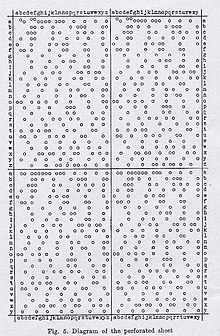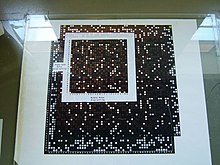Henryk Zygalski
Henryk Zygalski | |
|---|---|
 Henryk Zygalski about 1930 | |
| Born | 15 July 1908 |
| Died | 30 August 1978 (aged 70) Liss, England |
| Nationality | Polish |
| Occupation | Mathematician, cryptologist |
| Known for | Solving Enigma-machine ciphers |
| Awards | Order of Polonia Restituta, Grand Cross (2000) IEEE Milestone Award (2014) |
Henryk Zygalski (Polish pronunciation: [ˈxɛnrɨk zɨˈɡalski] (![]() listen); 15 July 1908 – 30 August 1978) was a Polish mathematician and cryptologist who worked at breaking German Enigma ciphers before and during World War II.
listen); 15 July 1908 – 30 August 1978) was a Polish mathematician and cryptologist who worked at breaking German Enigma ciphers before and during World War II.
Life[]
Zygalski was born on 15 July 1908 in Posen, German Empire (now Poznań, Poland). He was, from September 1932, a civilian cryptologist with the Polish General Staff's Biuro Szyfrów (Cipher Bureau), housed in the Saxon Palace in Warsaw. He worked there with fellow Poznań University alumni and Cipher Bureau cryptology-course graduates Marian Rejewski and Jerzy Różycki. Together they developed methods and equipment for breaking Enigma messages.

In late 1938, in response to growing complexities in German encryption procedures, Zygalski designed the "perforated sheets," also known as "Zygalski sheets," a manual device for finding Enigma settings. This scheme, like the earlier "card catalog," was independent of the number of connections being used in the Enigma's plugboard, or commutator.
After the war, he remained in exile in the United Kingdom and worked, until his retirement, as a lecturer in mathematical statistics at the University of Surrey. During this period he was prevented by the Official Secrets Act from speaking of his achievements in cryptology.
He died on 30 August 1978 in Liss, England, was cremated and his ashes taken to London.

Honors[]
Shortly before his death, he was honored by the Polish University in Exile with an honorary doctorate for his role in breaking Enigma.
See also[]
- Cryptanalysis of the Enigma
- List of cryptographers
- List of Polish mathematicians
References[]

- Władysław Kozaczuk, Enigma: How the German Machine Cipher Was Broken, and How It Was Read by the Allies in World War II, edited and translated by Christopher Kasparek, Frederick, MD, University Publications of America, 1984, ISBN 0-89093-547-5.
| Methods and technology |
|---|
| Locations |
| Personnel |
|
Chief
Gwido Langer German Section cryptologists Wiktor Michałowski
Chief of Russian Section
Jan Graliński Russian Section cryptologist
Piotr Smoleński |
- Scientists from Poznań
- Polish Army officers
- 20th-century Polish mathematicians
- Pre-computer cryptographers
- Polish cryptographers
- Cipher Bureau (Poland)
- Polish emigrants to the United Kingdom
- 20th-century Polish inventors
- Academics of the University of Surrey
- 1908 births
- 1978 deaths
- Adam Mickiewicz University in Poznań alumni